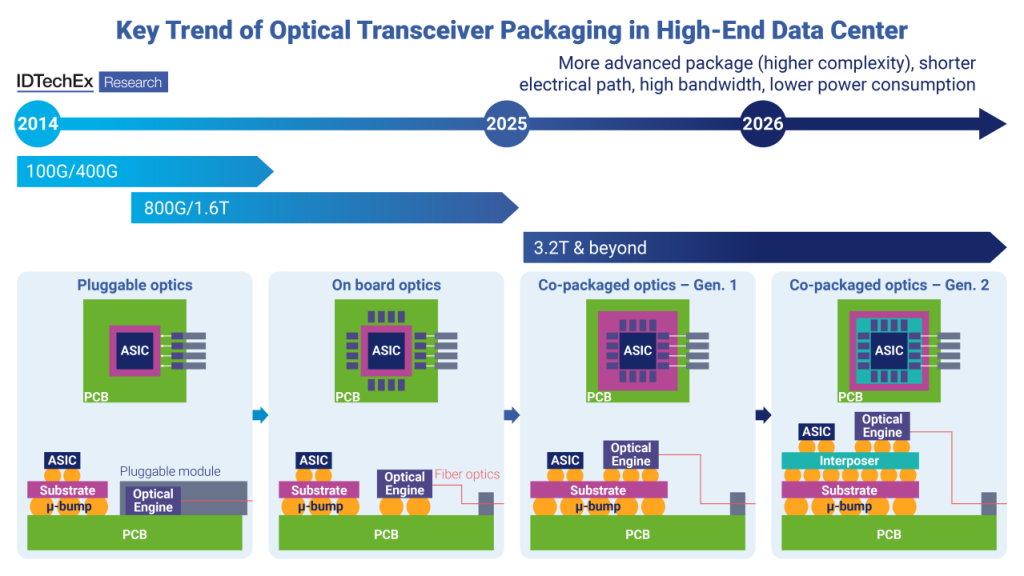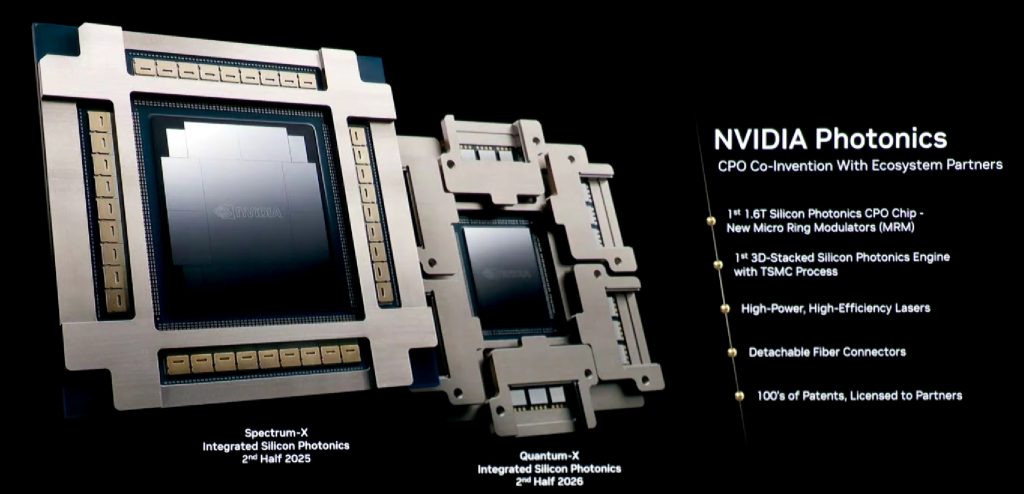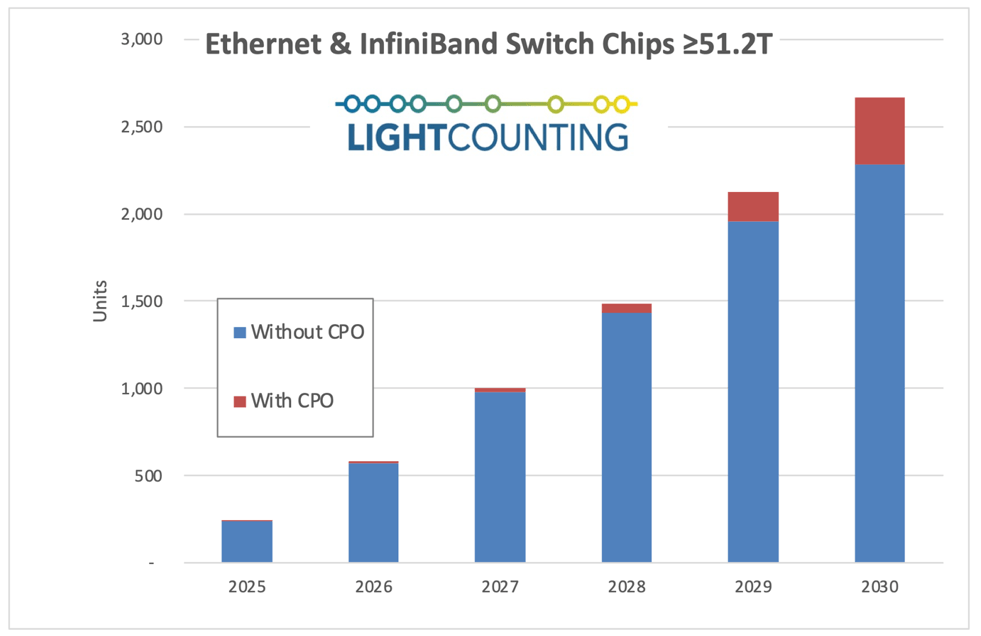When ChatGPT’s daily API calls exceeded 1 billion and AI large model training consumed hundreds of billions of floating-point operations in a single run, computing power has become the core production factor in the digital economy era. Supporting this computing power tsunami is not only the “computing heart” of GPU clusters but also the “transmission vessels” of optical communication networks. In 2025, optical communication technology centered on CPO (Co-packaged Optics) has reached a triple inflection point of “technological breakthrough – demand explosion – performance realization.” The aggressive layout of giants like NVIDIA and Broadcom, along with accelerated breakthroughs in domestic industrial chains, is driving CPO to become the core force reshaping AI data centers and leading a new round of technological transformation.
Technical Breakthrough: From Architectural Reconstruction to Performance Leap
CPO is not a local optimization of traditional optical modules but achieves a fundamental transformation of optical interconnect links through “optoelectronic co-packaging.” Its core logic is the deep integration of optical engines with switching chips/computing chips at the packaging level, reconstructing the traditional architecture of “switching chip → PCB traces → optical module → optical fiber” into a new architecture of “chip → millimeter-level electrical interconnect → optical engine → optical fiber,” fundamentally breaking through physical transmission bottlenecks.

The 2025 NVIDIA GTC Conference became the critical node for CPO technology explosion. The conference explicitly announced that the GB300 chip and next-generation Rubin platform to be launched in the second half of the year will fully adopt CPO technology, proposing three mandatory metrics: transmission energy efficiency ratio must be lower than 8pJ/bit (a 47% reduction compared to existing solutions), 1U equipment bandwidth density must be no less than 100Gbps/mm, and end-to-end latency must be controlled within 0.5 microseconds. This requirement directly sentences traditional pluggable optical modules to “death”—800G pluggable modules have power consumption of up to 15-20W and bandwidth density of only 30Gbps/mm, completely unable to meet the needs of AI computing clusters. Through CPO technology, the Rubin platform increases the data transfer rate between chips to 6.4Tbps, with interconnect quantities exceeding 256, enabling AI cluster computing power density to increase by 3.5 times.

Technological innovation continues to iterate, and cost control has achieved key breakthroughs. NVIDIA’s research team proposed an innovative solution using single-mode fiber (SMF) instead of traditional polarization-maintaining fiber (PMF), solving the polarization state drift problem introduced by SMF coupling by integrating an active polarization tracking system on the silicon photonic chip. Experimental data shows this solution can reduce packaging costs by approximately 2.7 times while only introducing 0.74dB additional insertion loss and 0.17pJ/b energy efficiency loss, clearing cost barriers for CPO large-scale application. Additionally, CPO technology achieves significant power optimization by eliminating complex signal compensation circuits
Industrial Chain Reshaping: Global Competition and Domestic Breakthrough
The commercialization of CPO technology is not only a product upgrade but also a comprehensive reshaping of the optical communication industrial chain. In the traditional optical module industrial chain, the packaging assembly link occupies over 60% of the value share, while CPO shifts the value center to high-barrier core technology links, forming a new value chain of “upstream core devices – midstream advanced packaging – downstream system integration,” presenting an obvious “pyramid” value distribution pattern.
In the upstream core device field, domestic substitution is accelerating breakthroughs. Silicon photonic chips, as the “brain” of CPO, determine the performance ceiling.
The midstream packaging link is welcoming a process revolution. CPO packaging adopts a 2.5D integrated architecture of “chip – silicon interposer – optical engine,” with interconnect density reaching 10^4 per mm², and process complexity 3 times higher than traditional optical modules.
Global giants are accelerating ecological layout. Broadcom launched the 51.2T Bailly switch, which has achieved 1 million 400G port failure-free operation in Meta data centers; AMD invested NT$8.64 billion to build a silicon photonics R&D center in Taiwan; TSMC and Broadcom are testing 3nm MRM CPO, planning mass production in 2026; NVIDIA invested approximately $120 million to build an AI data center in Munich, Germany, which will deploy 10,000 Blackwell GPUs supporting CPO.
Commercial Implementation: From Verification to Large-Scale Deployment
2025 has become the critical year for CPO technology to move from the laboratory to commercial use, with AI data centers becoming the core application scenario. NVIDIA Spectrum-X CPO switches have been adopted by Oracle and Meta, enabling system energy efficiency to increase by 3.5 times, reliability to improve 10 times, and deployment time to shorten to 77% of the original. Broadcom and Tencent’s cooperative 25.6Tbps CPO switching equipment, through coupling and packaging 4 3.2Tbps optical engines with switching chips, achieved a breakthrough of 64 optical ports in 1U equipment, with bandwidth density reaching 2.8 times that of traditional solutions.

In AI training scenarios, CPO technology’s low-latency advantage is particularly critical. By eliminating signal delay from long-distance electrical connections, CPO increases GPU cluster computing power utilization by over 20%, potentially reducing GPT-6 large model training cycles from 18 months to 12 months. Tech giants like Microsoft and Google have significantly increased CPO procurement.
Market size shows explosive growth momentum. The global CPO market size is expected to reach $8.6 billion in 2025 and exceed $50 billion in 2027, with an annual compound growth rate as high as 37-40%. From the penetration rhythm perspective, by the end of 2025 it is in the early commercial stage (AI data center penetration <10%), entering mass production peak in 2026 (penetration 20-30%), achieving large-scale application in 2027 (>40%, HPC accounting for half), and by 2033 the market size is expected to reach $250 billion.
Future Trends: Technology Evolution and Ecosystem Integration
CPO technology’s evolution path is clear and explicit, upgrading from the current 1.6T rate to 3.2T and 6.4T, transitioning from LPO to pure CPO and then to future optoelectronic integrated (OIO), with continuously improving integration being the core thread. LightCounting data shows the global LPO market size will reach $1.8 billion in 2025, but by 2027 its proportion will drop from 25% to 8%, being rapidly replaced by CPO technology.

Technical challenges still require continuous breakthroughs. Current CPO faces issues such as integration complexity, difficult thermal management, and dependence on imported high-end materials. Future innovations are needed in silicon photonic chip integration, passive alignment accuracy, liquid cooling efficiency, etc. With the popularization of 3.2T and 6.4T rates, the integration of optical engines will become increasingly high, and an integrated solution of “optical engine + chip” may emerge, placing higher demands on corporate R&D capabilities.
Industrial chain ecology will accelerate integration. CPO technology involves multiple fields including chip design, optical devices, advanced packaging, and equipment manufacturing. No single enterprise can cover the entire chain, making cross-border cooperation an inevitable trend. Domestic enterprises are building competitive advantages through models such as “chip – complete machine” binding and vertical integration.
The outbreak of CPO technology is not only a revolution in the optical communication industry but also an upgrade and reconstruction of digital economy infrastructure. Against the backdrop of continuous AI computing power demand explosion, CPO, with its core advantages of ultra-high bandwidth, ultra-low latency, and ultimate energy efficiency, is becoming the key support to break through computing power transmission bottlenecks. With continuous investment from global giants and accelerated breakthroughs in domestic industrial chains, CPO will move from technological innovation to large-scale popularization, bringing profound changes to AI factories, supercomputing centers, cloud computing and other fields, and leading human society into a more efficient digital era.
